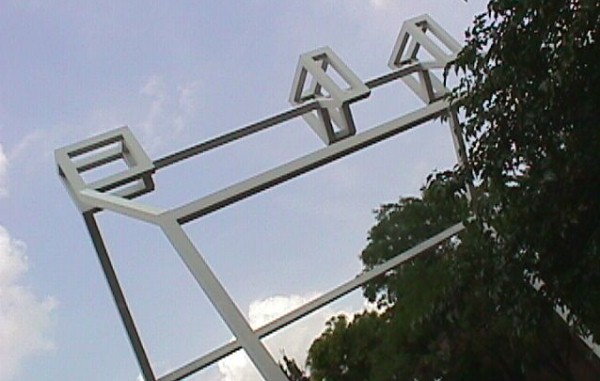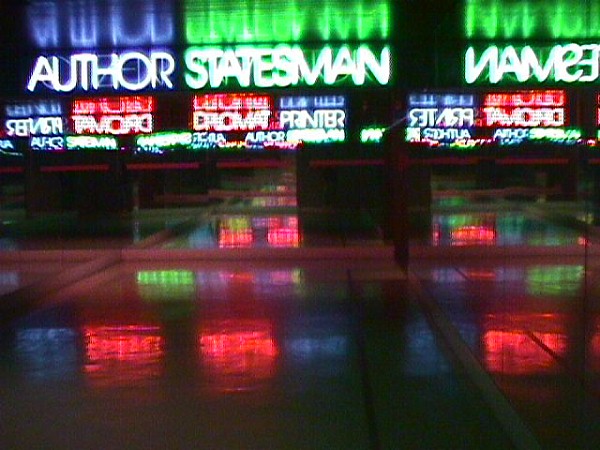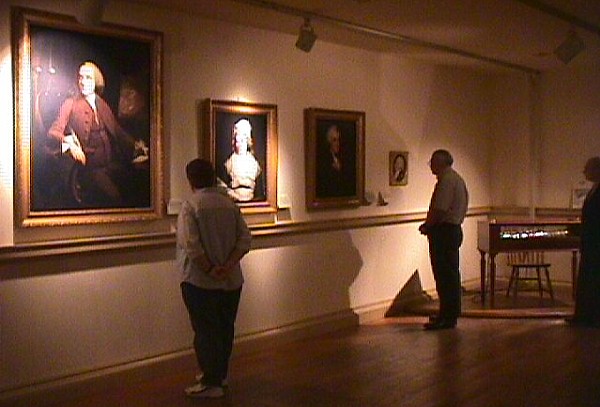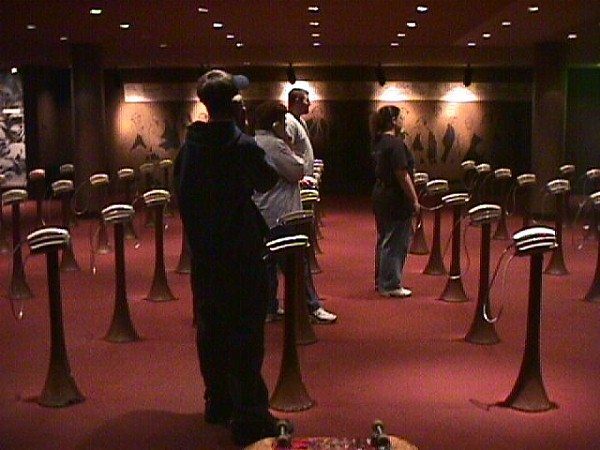Virtually all things virtual, included the virtual house, are hot architectural topics in the very late 20th century.
Eisenman, Jean Nouvel, and all the other recent virtual experimenting architects, have thus far failed to recognize their true 20th century patriarch on this count. Even Rajchman falls short of making the right "new connections" here.
| |

The problem can be put in this way: the virtual house is the one which, through its plan, space, construction, and intelligence, generates the most new connections, the one so arranged or disposed as to permit the greatest power for unforeseen relations. But what is this idea of the virtual as multiple potentials for new connections or unseen relations?
...the principle of selection of the virtual house: the one that keeps our possibilities, our hopes from salvationism, and our impossibilities, our despair from resignation.
These are some senses in which the virtual house may be said to be the house that in its plan, space, construction, and intelligence gives the greatest number of "new connections." But of course there is a problem. It has yet to be designed.
John Rajchman, "The Virtual House" in Constructions (Cambridge, MA: The MIT Press, 1998), pp. 115-21.
|
1972-76 - Franklin Court - Venturi and Rauch:
the ghost frame of Benjamin Franklin's long gone original home -- it's a pure wireframe, it's "built" and still "not there," almost all the "connections" are purely in the mind -- it's the quintessential virtual house.
November 15, 1998
Anyone that is not convinced that Venturi and Rauch's Franklin Count is the foremost virtual house of this century (if not of all architectural history) need only be reminded that Benjamin Franklin (whose "house" is being discussed here) became famous for writing Experiments and Observations on Electricity (1751), and, moreover, don't they teach in grade schools that Benjamin Franklin actually DISCOVERED ELECTRICITY!
Lao-Tzu say: if the shoe fits, the foot is forgotten.
| |
 
|
21 November, 1998
The Director of Quondam - A Virtual Museum of Architecture quietly celebrated Quondam's second online anniversary with a visit to the first virtual house of the 20th century. After capturing digital images of Franklin's "house" in the courtyard, the Director entered Franklin Court's Underground Museum and subsequently found himself in a room (actually a virtual environment) dedicated to Franklin - Man of Infinite Dimensions.
| |

|
See also:
| |

2002.12.09 10:45
unreal phone call about a virtual house
Ring! Ring!
Hi. It's me. Guess what.
A couple of weeks ago BC wrote/asked "has anyone ever taken works from a catalogue or various artifacts as you're doing Steve, and put them up in their own exhibit, each a reproduction, and possibly visibly so (as in, not a forgery/fake) and had this be the artwork to be viewed in a gallery?"
You know, it's worth noting that an answer to BC's question is, yes, the gallery of paintings and artifacts one first encounters at the Underground Museum of Franklin Court contains paintings that are all reproductions. I remember being disappointed when I first learned this via reading the labels describing the paintings, but now I see this situation as being quite rightly appropriate given this is indeed the painting gallery of a truly virtual house. Virtual paintings, as in being as close to real without actually being real, in a virtual house--it seems only 'natural,' doesn't it?
When you leave the virtual picture gallery, you then enter the reflective virtual environment entitled "Franklin: Man of Unlimited Dimensions." And after immersion in reflection you encounter the Franklin Exchange, a large bank of telephones where one can make virtual phone calls. On a large screen facing the telephone bank is a directory of names and telephone numbers of people Franklin knew--you didn't know Franklin had a roll-a-dex, did you? So let your fingers do the walking to hear the virtual talking.
Bye-bye.

most modern building of the 20th century.
|





